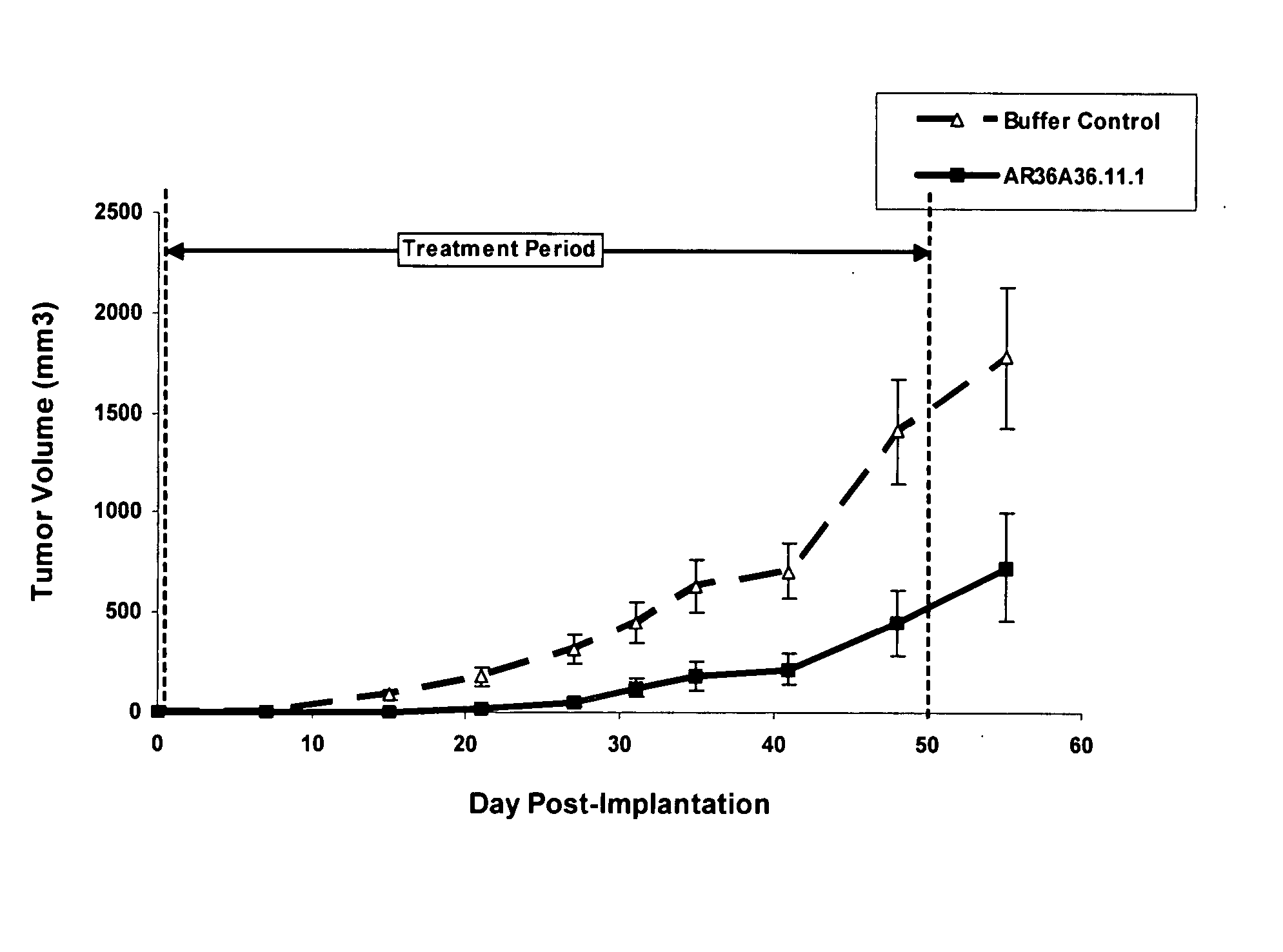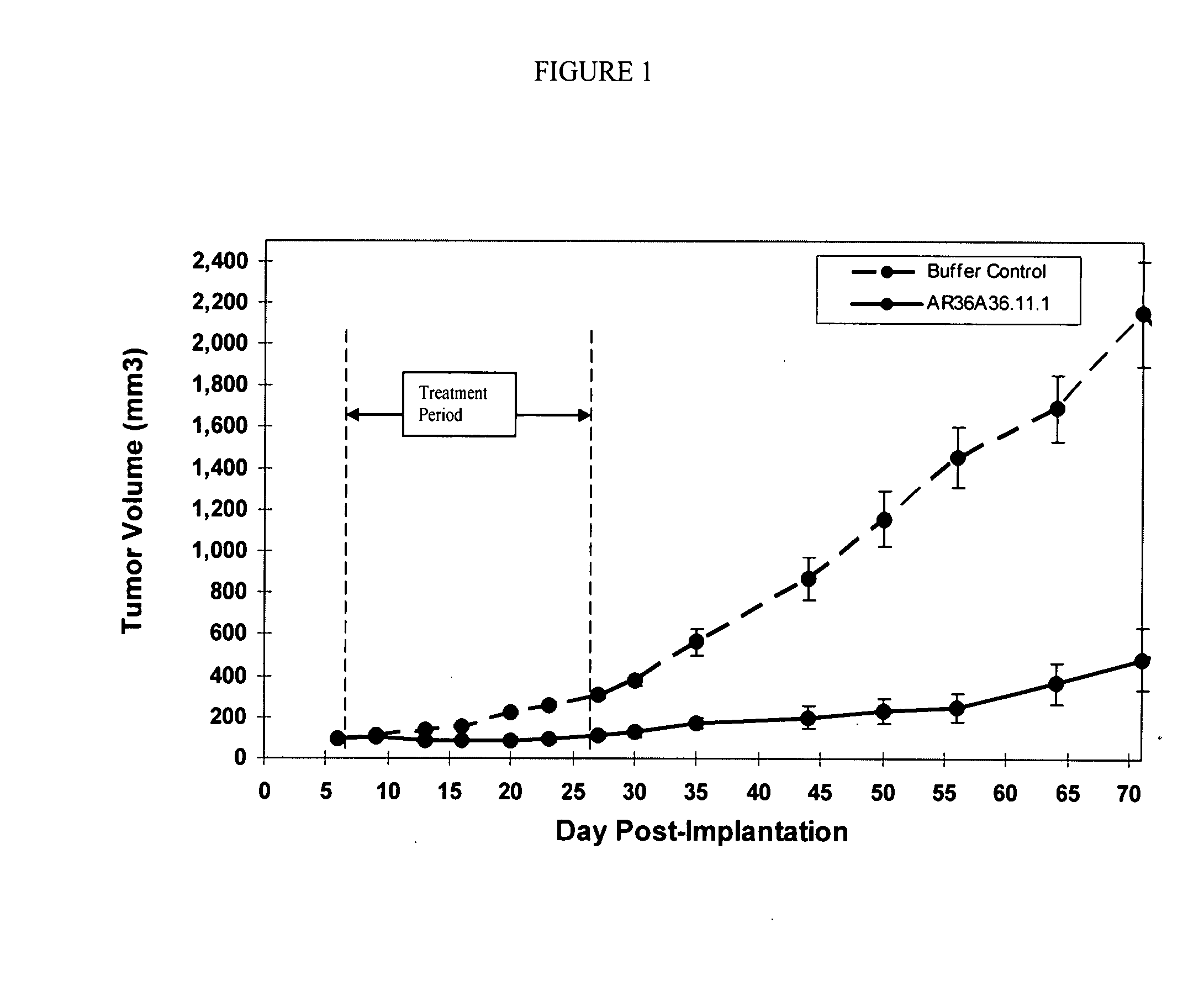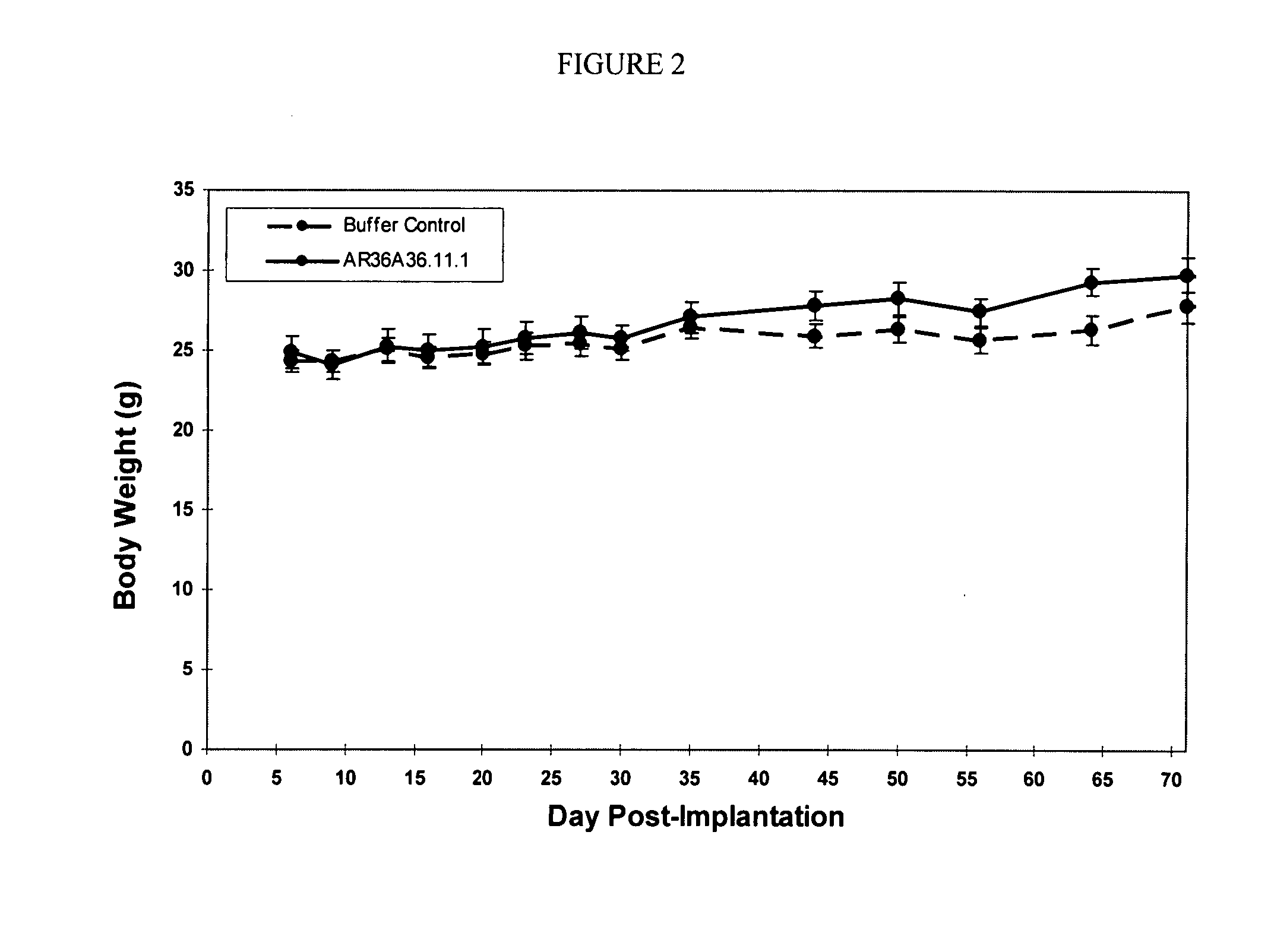Cytotoxicity mediation of cells evidencing surface expression of CD59
a cytotoxicity and surface expression technology, applied in the field of cancer diagnosis and treatment, to achieve the effect of enhancing the possibility of targeting tumors, effective targeting and inhibiting the growth and development of tumors, and prolonging survival
- Summary
- Abstract
- Description
- Claims
- Application Information
AI Technical Summary
Benefits of technology
Problems solved by technology
Method used
Image
Examples
example 1
In Vivo Tumor Experiment with Human PC-3 Cancer Cells
[0172] AR36A36.11.1 has previously demonstrated (as disclosed in Ser. No. 11 / 067,366) efficacy in a preventative in vivo model of prostate cancer. To extend this finding AR36A36.11.1 was tested in an established PC-3 prostate cancer xenograft model. With reference to FIGS. 1 and 2, 8 to 10 week old male athymic nude mice were implanted with 5 million human prostate cancer cells (PC-3) in 100 microliters PBS solution injected subcutaneously in the right flank of each mouse. The mice were randomly divided into 2 treatment groups of 10. On day 6 after implantation, when the average mouse tumor volume reached approximately 95 mm3, 20 mg / kg of AR36A36.11.1 test antibody or buffer control was administered intraperitoneally to each cohort in a volume of 300 microliters after dilution from the stock concentration with a diluent that contained 2.7 mM KCl, 1 mM KH2PO4, 137 mM NaCl and 20 mM Na2HPO4. The antibody and control samples were th...
example 2
In Vivo Tumor Experiment with Human MDA-MB-468 Breast Cancer Cells
[0176] AR36A36.11.1 has previously demonstrated (as disclosed in Ser. No. 11 / 067,366) efficacy in a MDA-MB-231 human breast cancer xenograft model. To extend this finding to another human breast cancer model, AR36A36.11.1 was tested in an established MDA-MB-468 human breast cancer xenograft model. With reference to FIGS. 3 and 4, 8 to 10 week old female athymic nude mice were implanted with 5 million human breast cancer cells (MDA-MB-468) in 100 microliters PBS solution injected subcutaneously in the right flank of each mouse. The mice were randomly divided into 2 treatment groups of 10. On day 35 after implantation when the average mouse tumor volume reached approximately 83 mm3, 20 mg / kg of AR36A36.11.1 test antibody or buffer control was administered intraperitoneally to each cohort in a volume of 300 microliters after dilution from the stock concentration with a diluent that contained 2.7 mM KCl, 1 mM KH2PO4, 137...
example 3
In Vivo Tumor Experiment with Human MDA-MB-231 Breast Cancer Cells
[0180] AR36A36.11.1 has previously demonstrated (as disclosed in Ser. No. 11 / 067,366) efficacy in an established MDA-MB-231 human breast cancer xenograft model. To determine effective dose levels, AR36A36.11.1 was tested at various doses in an established MDA-MB-31 human breast cancer xenograft model. With reference to FIGS. 5 and 6, 8 to 10 week old female SCID mice were implanted with 5 million human breast cancer cells (MDA-MB-231) in 100 microliters PBS solution injected subcutaneously in the right flank of each mouse. The mice were randomly divided into 5 treatment groups of 10 when the average mouse tumor volume reached approximately 100 mm3. On day 11 after implantation, 20, 10, 2 or 0.2 mg / kg of AR36A36.11.1 test antibody or buffer control was administered intraperitoneally to each cohort in a volume of 300 microliters after dilution from the stock concentration with a diluent that contained 2.7 mM KCl, 1 mM ...
PUM
| Property | Measurement | Unit |
|---|---|---|
| Cytotoxicity | aaaaa | aaaaa |
| Radioactivity | aaaaa | aaaaa |
Abstract
Description
Claims
Application Information
 Login to View More
Login to View More - R&D
- Intellectual Property
- Life Sciences
- Materials
- Tech Scout
- Unparalleled Data Quality
- Higher Quality Content
- 60% Fewer Hallucinations
Browse by: Latest US Patents, China's latest patents, Technical Efficacy Thesaurus, Application Domain, Technology Topic, Popular Technical Reports.
© 2025 PatSnap. All rights reserved.Legal|Privacy policy|Modern Slavery Act Transparency Statement|Sitemap|About US| Contact US: help@patsnap.com



